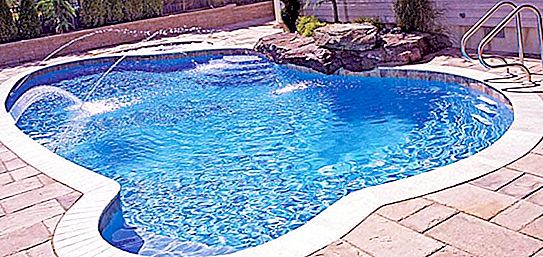The advantages of country houses are not only in the absence of fuss and intrusive neighbors. A huge plus is the availability of their own land, which can be ennobled to your liking. Some plant a lawn, others plant fruit trees. Still others dig a hole and build a pool. Bathing in it is a rather entertaining leisure, especially on hot summer days. But do not forget about caring for the pool. An important procedure is the treatment of water in it. You need to clean it regularly. Dirty water is not only smell and discomfort, but also a hotbed of harmful bacteria. Therefore, today we will consider different methods of water purification in the pool and their features.
Methods
Today there is a huge selection of tools and methods for disinfecting swimming pools, thanks to which you can avoid frequent water changes. So, the following cleaning methods are distinguished:
- Mechanical.
- Chemical.
- Electrophysical.
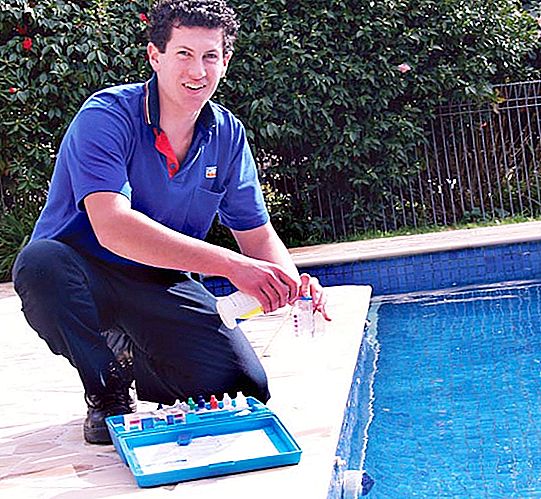
The disinfection method may be:
- By hand.
- Automatic.
- Semi-automatic.
What is the cheapest water treatment in the pool at the cottage? The easiest way is manual. However, it should be noted immediately minuses. This is the complexity and duration of the procedure. If you are going to save time and you have a larger budget, it is worth considering the option of automatic water purification in the pool.
The third method is a kind of compromise between the automatic and manual methods.
What is used for mechanical disinfection?
This procedure is performed using fluid filtration. Using the mechanical method, water is purified from particles such as:
- Insects.
- Leaves.
- Hair.
- Dust.
- Mud.
- As well as other mechanical and organic debris.
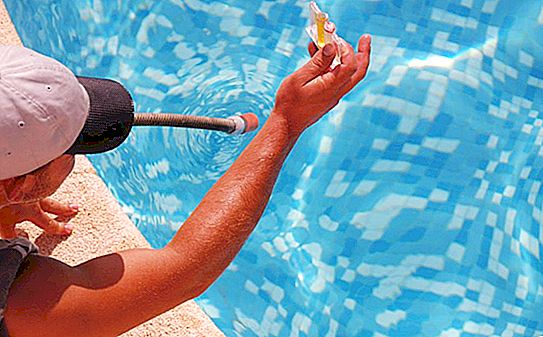
How does this happen? In this case, special filters are used to purify the pool water. They process the top layer of liquid, passing it through their nozzles and returning it to the tank. But it is worth remembering that the equipment for water treatment in the pool must have such a capacity that the entire volume of liquid through it can pass at least three to four times in a day.
Types of treatment plants
To date, there are several types of filters:
- Sand. They are used most often. Their advantage is that they require minimal financial costs. As cleaning elements, gravel and quartz sifted sand are used.
- Diatomaceous. They have a high degree of disinfection. Inside contains granite backfill and diatomaceous sand.
- Cartridge. Very easy to use, but do not give such a result as the previous type.
It is worth noting that if water is purified in the pool without chlorine by a pump, it is impossible to get rid of the contaminants that settle on the bottom and walls of the structure. In this case, it is advisable to use an underwater vacuum cleaner. It is designed to purify swimming pool water from various bacteria, mold and other high-density particles.
Types of Underwater Vacuum Cleaners
Many have already appreciated the benefits of using this equipment. It is such vacuum cleaners that are most suitable for high-quality water purification in the pool. But before choosing, you need to decide which type of unit is most suitable:
- Manual. It is also called bottom. Differs in small cost. It is mainly used for water treatment in an inflatable or collapsible pool. Connecting an item is simple. It connects to the filter and cleans the bottom of the pool.
- Semi-automatic. This equipment allows you to disinfect both the bottom and the walls of the reservoir. The semi-automatic vacuum cleaner is universal and suitable for all types of pools. Some models can connect to scrimmers. There are also options equipped with a bag for collecting contaminants.
- Auto. It has high power. It is used in reservoirs with a deep bottom and a large area. Reviews say that this device copes with disinfection of the bottom and walls of the pool.
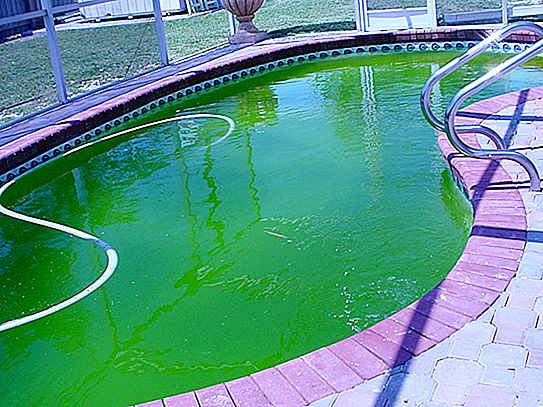
Underwater units are great for processing artificial ponds. When working, they do not emit any harmful substances. Also, their action is not accompanied by additional pollution, as is the case with the manual method. All debris and bacteria enter a sealed bag specifically designed for this purpose.
Hand Cleaning Kit
If the budget for water treatment in the pool is limited, you can apply a cheaper way. For manual disinfection, it is necessary to prepare:
- Set of butterfly net. Using these tools, all trash from the surface is collected. If it is necessary to remove dirt from the bottom, a deep net is used.
- Brush. Needed to eliminate algae plaque on the walls of the reservoir.
- Telescopic rods.
But even when using a professional kit for manual cleaning of pool water, the result will be different compared to using a pump. In addition, such treatment does not apply chemicals. This means that there will be no neutralization of bacteria and dangerous microorganisms that penetrate into the pool with garbage.
Chemical treatment
In order to properly disinfect a pond, you need to use special chemicals. Thanks to them, we will completely destroy various types of bacteria and microorganisms, reaching the required water quality. What is the purpose of water purification in the pool with chlorine and other chemicals? This is done to:
- Maintain a normal pH. This can be achieved through the use of active oxygen, bromine or the same bleach.
- Prevent water pollution. These tools for water purification in the pool can eliminate the development of calcareous deposits and algae on the surface of the walls of the reservoir. Thanks to chemistry, the transparency of the liquid is preserved.
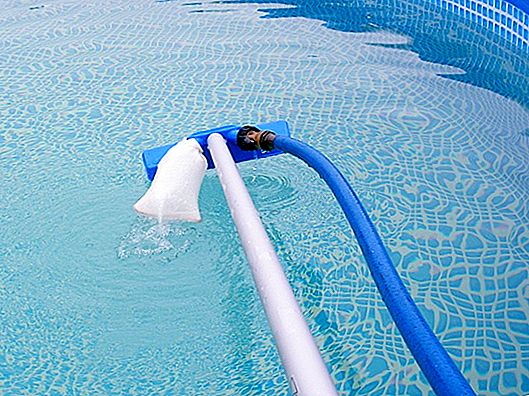
Are these drugs harmful to the human body? Experts say that when using the recommended concentrations, such water is absolutely safe for swimming. The main thing is to follow the instructions and not exceed the permissible standards.
Today you can buy various types of disinfectants. It:
- Powder.
- Granules.
- Tablets.
- Briquettes.
In order not to be confused when choosing, you can purchase universal multifunctional tablets. They are suitable for disinfection of any water bodies. In addition, they adjust the pH level in the liquid and remove calcareous deposits, and also hinder their further development.
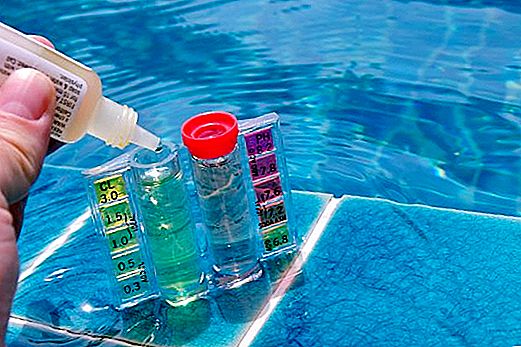
It is worth noting that for faster cleaning, it is better to use halogens. It is bromine and bleach. These drugs are the cheapest and are suitable for disinfection of large volumes of water. Today, chlorine gas is widely used (less commonly, its dioxides and chloramines). But when using such chemistry, do not forget about safety. Halogens (including bleach) are very aggressive substances. Do not increase their concentration.
Active oxygen
The mildest way to disinfect is the active oxygen method. This operation does not differ in speed and is rather slow. But it is active oxygen that is the safest means for chemical cleaning of a reservoir.
Electrolysis
This is another method of disinfecting liquids. It is produced as follows:
- A certain amount of edible salt is added to the pool.
- Salt passes through the electrolysis station.
- As a result, it breaks down into two components. These are sodium and chlorine.
- The latter enters a body of water and interacts with pollutants.
Reviews note that electrolysis is a fairly effective method of disinfection. In addition, such a water purification system in the pool does not cause allergic reactions and does not irritate the human mucosa.
Reagentless method
In this case, the electrophysical disinfection technology is used. It can be produced in several ways. It:
- Ozonation Experts say that the use of ozone is a more effective solution for disinfection than the use of bleach. In addition, this tool is absolutely safe for the human body.
- UV exposure. This is a fairly effective method, but it is necessarily produced using an ultraviolet emitter. After processing, such water will be completely safe for humans.
- Ionization. This process is performed using metals such as copper and silver. The essence of the process is as follows. Special equipment is installed in the pool through which polluted water passes. The equipment has electrodes that are affected by electric current. When working, they will delight silver and copper ions. Water passing through them is disinfected. Also, microorganisms that form algae and other organic plaque disappear in it.
How often is disinfection done?
Water purification in the pool (peroxide, chlorine or ultraviolet lamps - it does not matter) should be performed at least once a season. Only with timely procedures can the purity and transparency of the liquid in the pool be maintained. In addition, such water will be absolutely safe for the human body.
Useful Tips
There are situations when water very quickly loses its appearance. It begins to bloom and give off an unpleasant odor. Cleaning weekly is also not an option. But what to do? In order not to puzzle over the question of how to disinfect the pool, during its construction it is necessary to produce high-quality waterproofing. It is also worth using a filling magnetic water softener. It should be included in the closed circuit "pool - filter - pool".
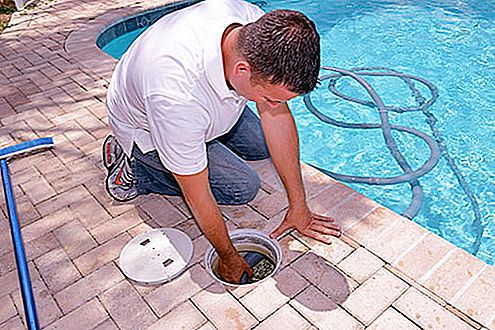
You need to carefully approach the issue of filling the reservoir. Do not use liquid from rivers, lakes and ponds. Why is that? This water has a lot of bacteria, algae and impurities. Therefore, in an artificial reservoir, it will begin to bloom quickly. In just a week, at a 30-degree temperature, such a liquid will acquire a green color and an unpleasant odor. Swimming in such a reservoir is not only unpleasant, but also harmful to the body. It is necessary to fill the pool exclusively from the centralized water supply system. It will be cheaper than regular chemical cleaning of the reservoir.
We also note some more useful recommendations:
- Before the start of the season, check not only the liquid for contamination, but also the pump for cleaning the pool water for performance. Replace the filter element if necessary.
- In enclosed swimming pools, disinfection can be less likely, since they do not come in contact with external sediments.
- If there are fatty deposits and algae on the walls of the reservoir, it is better to treat them with alkaline cleaners.
- To eliminate limescale, an acid cleaner can be used. But do not use hydrochloric acid, even if the pool is empty. It penetrates the space between the tiles and is mixed with the liquid during subsequent filling. Also, do not use products that contain phosphates. They will facilitate the reproduction of fungus and mold on the tile.
- At the end of the disinfection of the reservoir, it is worth rinsing the surface of the pipes. They must not rust. An acidic cleaner can be used to prevent corrosion.
- To exclude the appearance of algae in the future, lubricate the pool walls with an algaecide solution.
- When cleaning tiles, do not use aggressive agents. They should not cause a bleaching effect and affect the uniformity of color.
- When cleaning the air-water zone, use products with dirt emulsifiers.
- It is not recommended to choose cheap disinfection products. They can form active foam and plaque on the surface, which will last a very long time. Also, cheap products can have an unpleasant odor. He says that the product used ammonia and ammonia compounds. These products negatively affect the human body, including the respiratory tract.
- To get rid of lime on the bottom or walls of the pool, it is worth using special products to lower the pH level or chlorine powder. Ten minutes later, it can be washed off the surface.
- In the presence of stainless elements in the pool it is worth being careful. They should not come in contact with cleaning agents, otherwise their color may change. To clean such metal, you need to use specialized tools (pickling pastes), as well as to exclude brushing with steel fibers. This is the only way to preserve the original appearance of stainless elements in a pond.
